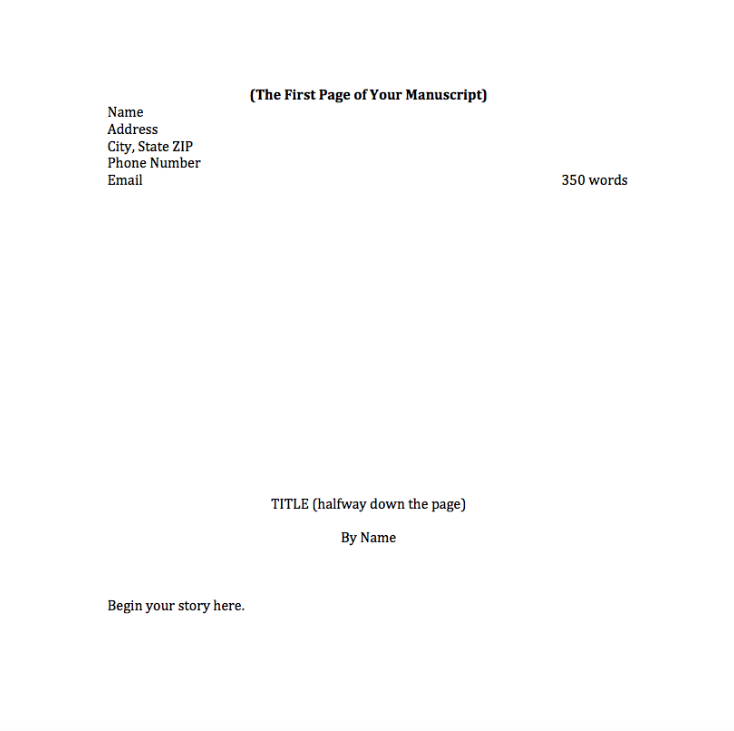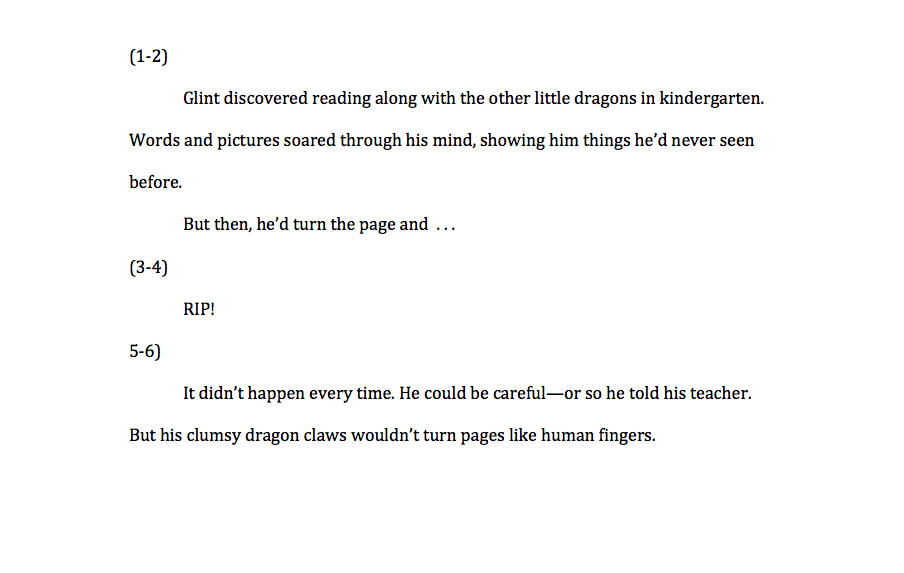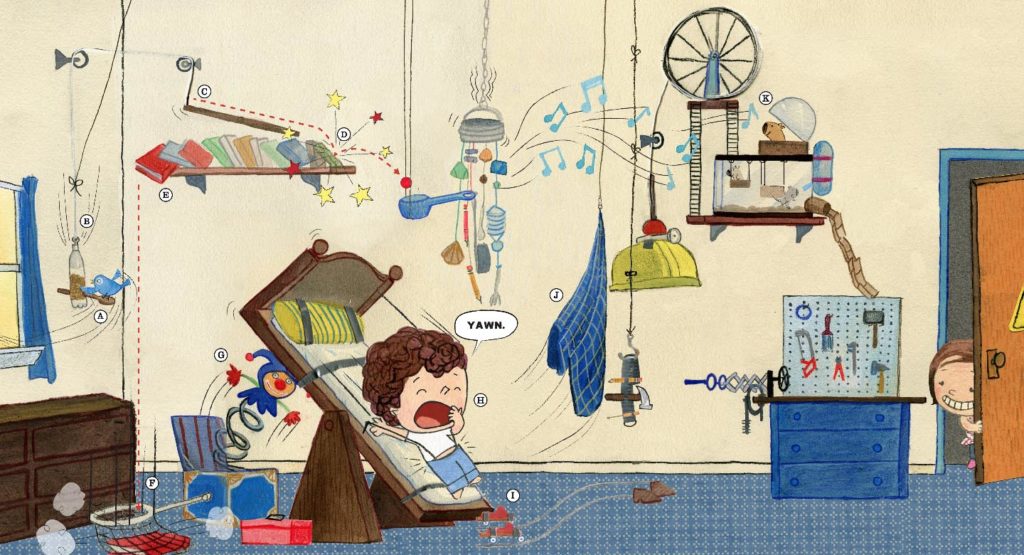Manuscript Format for Submissions or Queries
- by Myrna Foster
- published
Do you have questions about manuscript format? If so, you aren't alone. The good news is that formatting will be similar for any kind of manuscript. The bad news is that if you're submitting to someone, you'll need to check submission guidelines to see if that person has a their own variation of how they want a manuscript to be formatted.
But don't let that scare you off.
Basic Manuscript Format
Most agents and editors want to see a regular manuscript with indented paragraphs from writers. At the top of the first page, you'll want to include your contact information and the number of words in your manuscript. It should look something like this:

Make sure you follow submission guidelines with exactness. Don't assume that you're the exception. Research the industry professionals you want
to look at your work. Don't send your picture book to someone who doesn't represent or publish picture books. Those guidelines are a test, and your willingness/ability to follow them tells an editor or an agent whether or not you're someone they want to work with.
Some editors or agents want electronic submissions, and some prefer snail mail submissions. Unless otherwise indicated, the following guidelines can be assumed.
- Use 12-point Times New Roman (black ink).
- Use 8 ½ “ by 11” white paper.
- Double space your story.
- Use a 1” or 1.25” margin on each side of the page.
Make sure you number your pages, including your title and last name with the page number, especially for snail mail submissions. And for email submissions, don't attach anything unless the submission guidelines ask you to do so. For most email submissions, you should copy and paste your manuscript below your cover letter. When you do that, you don't need to include all of your contact information and your word count at the top (as shown in the example above) because those should be included in your query or cover letter.
Jim Averbeck addressed how to do a header on your other pages in the following highlight from one of his Writing Picture Book Manuscripts workshops.
I mentioned that for most paragraphs you'd write in paragraphs (indented .5 inches at the beginning of each paragraph). If you're writing in verse (free verse or rhyming), then you'd use stanzas instead (without indentation).
Paginated Manuscript Format
Occasionally an editor or agent will want to see a paginated manuscript for a picture book. This doesn't mean that you put the lines for each page on its own manuscript page. Nope. You just indicate the page numbers in parenthesis above your text for each page.
Here's an example:

If you want to indicate pagination without using numbers, you can also put in an extra hard return everywhere you have a page turn. This is really only for those of you who've figured out your page turns by making a dummy. But if you aren't the illustrator, the editor and illustrator may come up with even better page turns. You'll want to be flexible.
If you plan on illustrating your own book, then you'll want to submit a dummy. Here's another highlight from Jim Averbeck.
If you have any unanswered questions about manuscript format, please comment below!

Myrna Foster
Myrna Foster writes and edits content for Storyteller Academy and the WriteRiders Newsletter for SCBWI Nevada. She has spent a lot of time teaching and coaching children, including five years as a preschool teacher. She's also worked as a journalist, and Highlights High Five has published six of her poems.

FREE DOWNLOADABLE RESOURCES
Find them HERE

Learn how to write your children's book from professional, award-winning authors and illustrators
in your own time, at your own pace.
JOIN OUR COMMUNITY
Your creative village is waiting for you HERE.
And it's free!
FEATURED

How to Write Children's Books in 7 Steps
EXPLORE
RECENT POSTS
Instructor Stories: Darcy Pattison
Instructor Stories: Baptiste Paul
Instructor Stories: Isabella Kung
Challenges & Twitter Events for Kidlit Creators
Use Mentor Texts to Write Chapter Books


